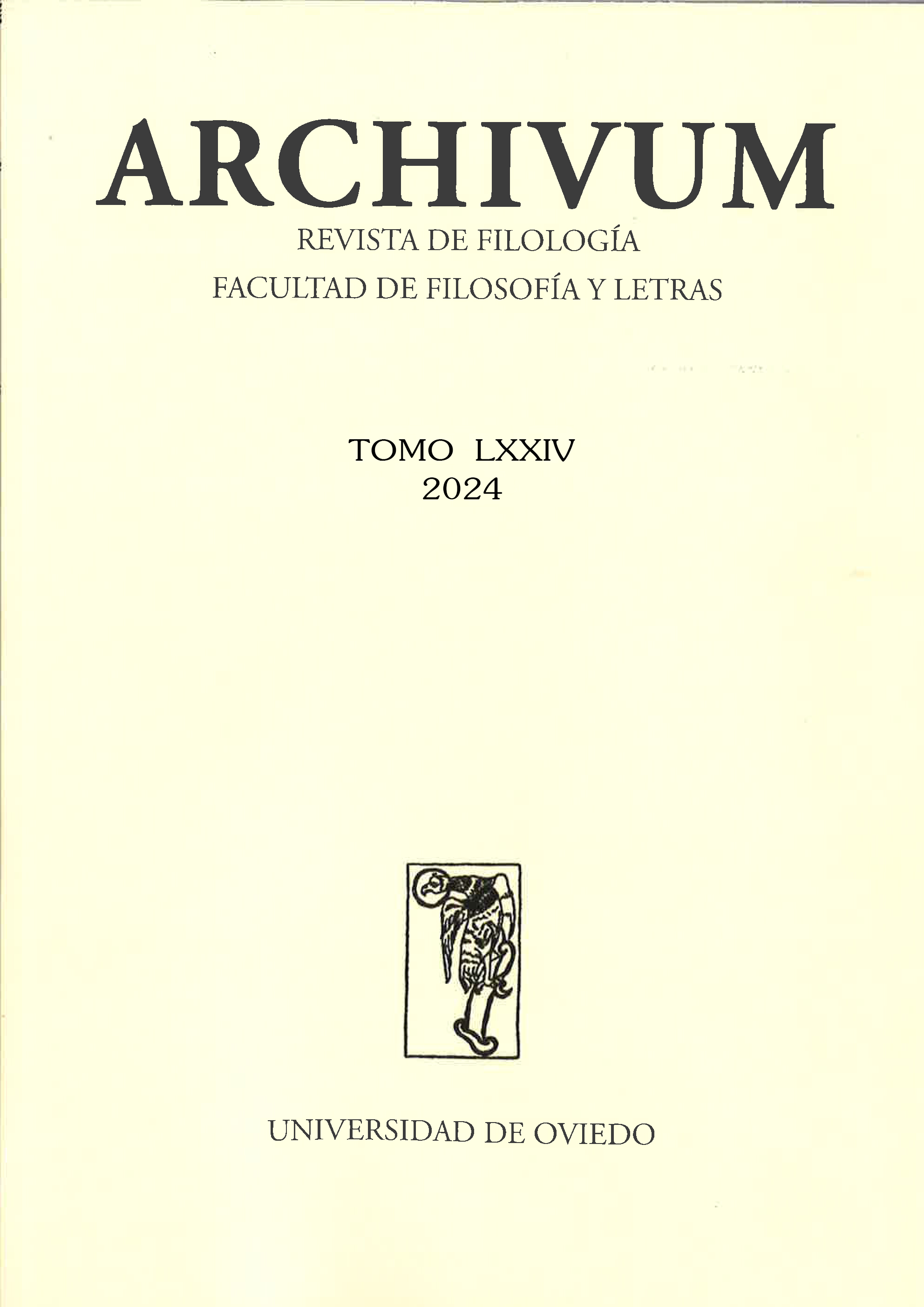Resumen
El trabajo trata de reconocer en la narrativa de Murakami -primordialmente, en los cuentos- algunas constantes que le dan sello propio, que irían desde la aparición de los elementos fantásticos o, asimismo, ciertas hechuras -gama de personajes, giros argumentales…- cuyo referente podría encontrarse en los cuentos de Raymond Carver. Por ello, se rastrea en las páginas murakamianas para determinar en qué grado se manifiestan los mecanismos e influencias señalados. En ese recorrido indagatorio es fundamental la remisión tanto a obras y autores reconocidos (Strecher, Rubio, Atkins) como a las declaraciones del propio autor al respecto. De la confrontación de los textos de Murakami con los análisis teóricos sobre el realismo fantástico (Roas, Oviedo) y los textos y principios asumidos por Carver se puede concluir que ambos rótulos resultan perceptibles para caracterizar esta narrativa. Se comprueba, pues, que el flujo del material subconsciente configura significativamente estos relatos al trasladarlos al entorno fantástico e, igualmente, que los tipos de personajes de Murakami, entre otros rasgos, pueden semejarse a los del narrador norteamericano.
Citas
Anderson, S. “The fierce imagination of Haruki Murakami”.
The New York Times Magazine. 21 Octubre 2011. https://www.
nytimes.com/2011/10/23/magazine/the-fierce-imagination-of-haruki-
murakami.html
Atkins, M. T. (2012). Time and space reconsidered: the literary
landscape of Murakami Haruki. Londres: SOAS, University of London.
https://eprints.soas.ac.uk /15631/1/Atkins_M_3437.pdf
Carver, R. (1981). “A storyteller`s shoptalk”. New York Times,
febrero 1981. https://archive.nytimes.com/www.nytimes.com/
books/01/01/21/specials/carver-shoptalk.html?fbclid=IwAR2jbA7W7iQjmFKmfD1T3oYEqEChtqtZtEF9RtYAd7SiUPvkNY2Jbe-
IusE
Carver, R. (1991). Collected stories. 3ª ed. Ed. William P. Stull
y Maureen P. Carroll. The Library of America.
Carver, R. (2019) Todos nosotros. Poesía completa. Ed. Tess Gallagher.
Trad. Jaime Priede. Anagrama. Edición digital.
Castellón Alcalá, H. (2022) “Sobre el Ideario Narrativo y
el Realismo Fantástico de Haruki Murakami a partir de algunas
obras”. Argos, Vol. 9, nº 24, pp. 78-102. https://doi.org/10.32870/
argos.v9.n24.7b22
Kita, V. (2014). “Dirty Realism in Carver’s Work”. Mediterranean
Journal of Social Sciences, Vol 5, Nº 22, pp. 385-394. https://
doi.org/10.5901/mjss.2014.v5n22p385
Murakami, H. (1993). “A literary comrade”. Remembering Ray.
A composite biography. Trad. Tara Maja Mc Gowand. Ed. William
L. Stull y Maureen P. Carroll, pp. 130-135. Capra.
Murakami, H. (2001). Crónica del pájaro que da cuerda al mundo.
Trad. Lourdes Porta y Junichi Matsuura. Tusquets. Edición
digital.
Murakami, H. (2008). Sauce ciego, mujer dormida. Trad. Lourdes
Porta Fuentes. Tusquets. Edición digital.
Murakami, H. (2016). El elefante desaparece. Trad. Fernando
Cordobés González y Yoko Ogihara. Tusquets. Edición digital.
Murakami, H. (2017). De qué hablo cuando hablo de escribir.
Trad. Fernando Cordobés y Yoko Ogihara. Tusquets. Edición
digital.
Murakami, H. (2019). La muerte del comendador. Libro 2. Trad.
Fernando Cordobés y Yogo Oginara. Tusquets. Edición digital.
Oviedo Pérez de Tudela, R. (1999). “Huellas de vanguardia:
realismo mágico/ literatura fantástica. Esbozo de una relación”.
Anales de Literatura Hispanoamericana (28), pp. 323-341. https://revistas.
ucm.es/index.php/ALHI/ article/view/ALHI9999120323A
Pountney, J. (2017). “Raymond Carver and Haruki Murakami:
Literary Influence in Late-Capitalism”. The Raymond Carver
Review,pp. 58-78. https://du1ux2871uqvu.cloudfront.net/sites/
default/files/file/2i%20Pountney.pdf
Roas, D. (2009). “Lo fantástico como desestabilización de lo
real: elementos para una definición”. Ensayos sobre ciencia ficción
y literatura fantástica: Actas del Primer Congreso Internacional de literatura
fantástica y ciencia ficción. Eds.Teresa López Pellisa y Fernando
Ángel Moreno Serrano. Asociación Cultural Xatafi, pp.
-120.
Rowland, H. (2019). “How Haruki Murakami Navigates Between
Japanese and Western Cultures”. Cuture Trip. 6 Marzo.
https://theculturetrip.com/asia/japan/articles/japan-caught-between-
cultures/
Rubio, C. (2019). El Japón de Murakami. Aguilar.
Sotelo, J. (2013). Los mundos de Murakami. Izana Editores.
Strecher, M. (1999). “Magical Realism and the Search for
Identity in the Fiction of Murakami Haruki”. Journal of Japanese
Studies, Vol. 25, 2 (Summer), pp. 263-298.

Esta obra está bajo una licencia internacional Creative Commons Atribución-NoComercial-SinDerivadas 4.0.

